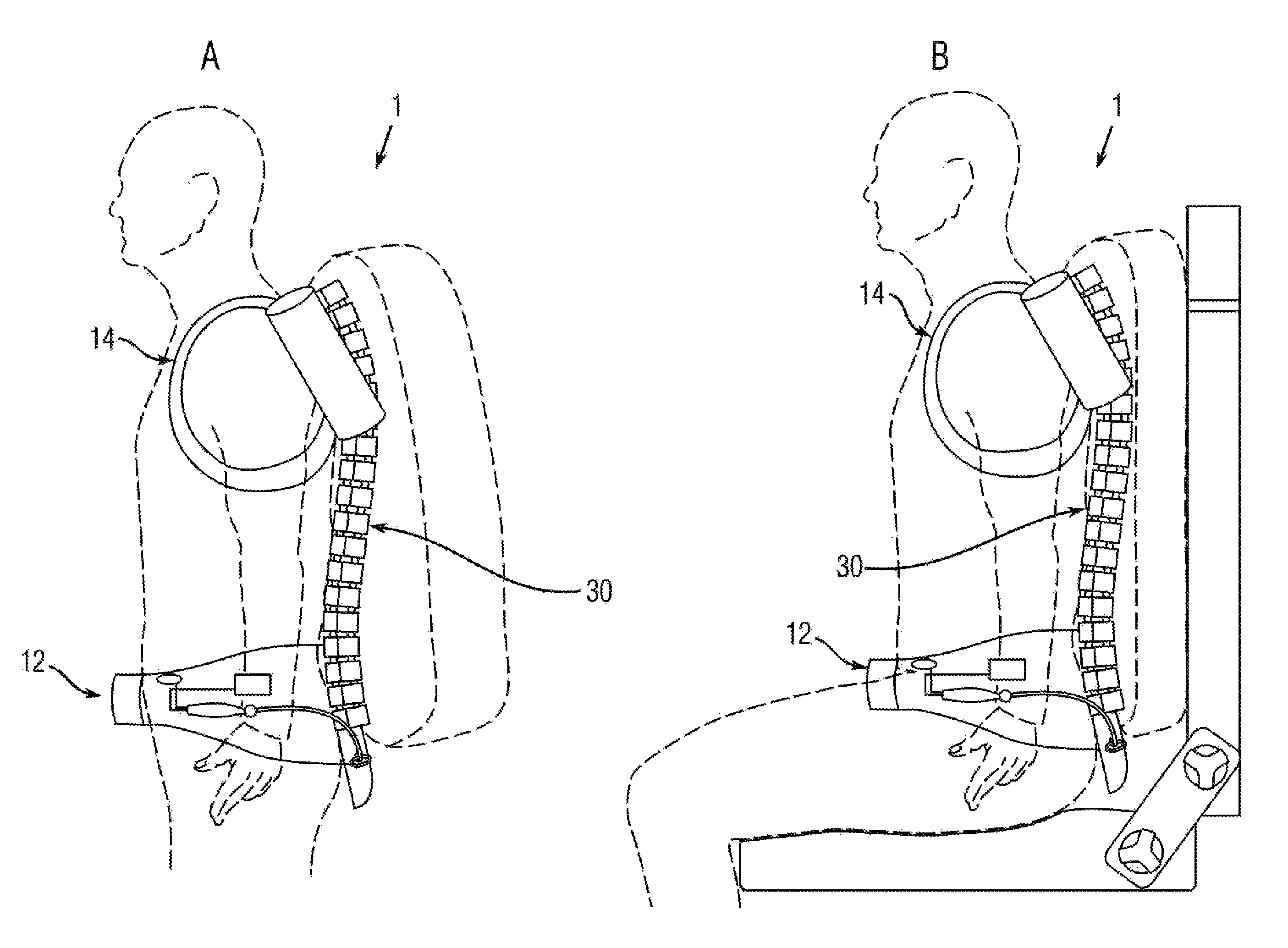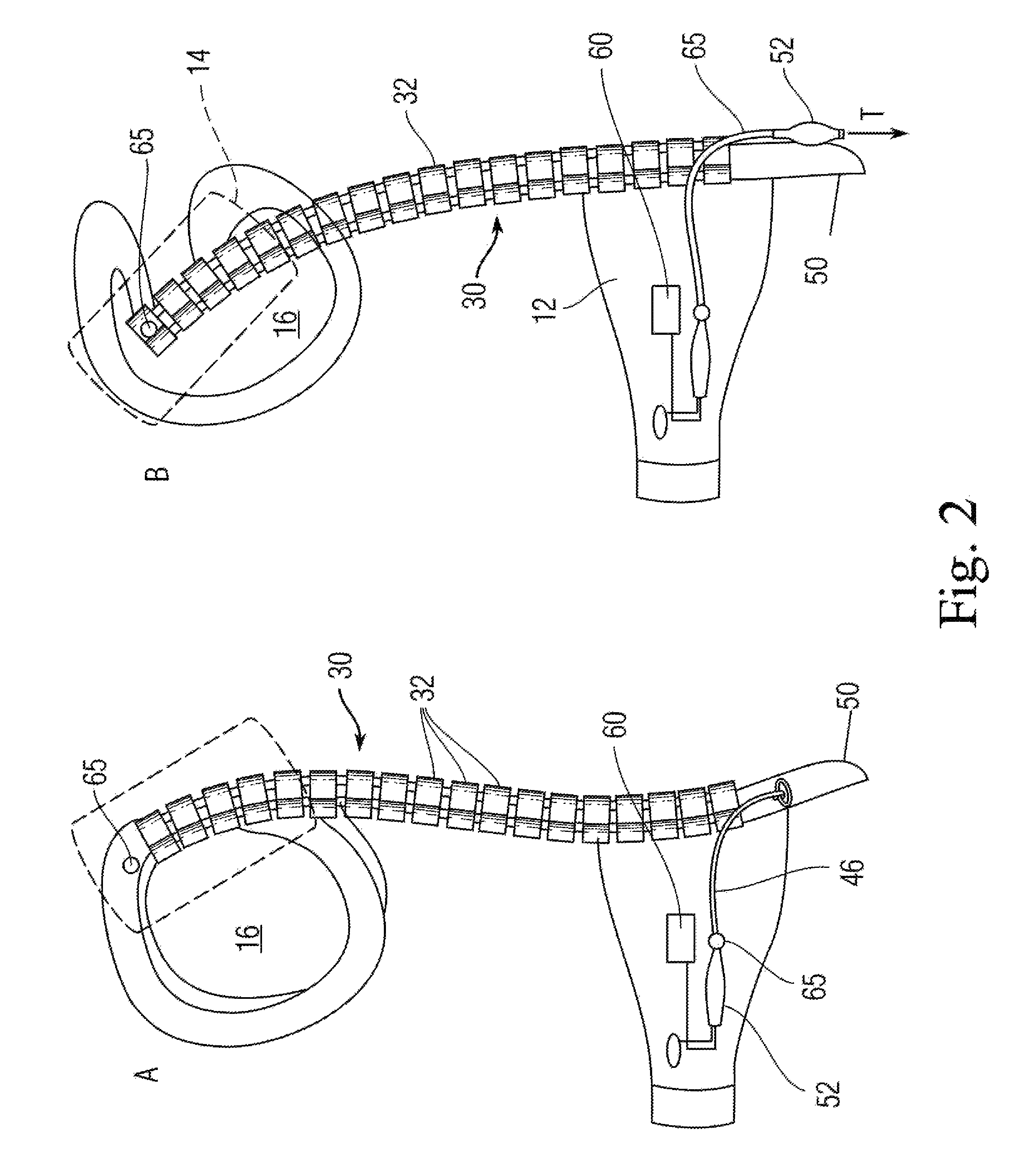Active spinal support system
a spinal support system and active technology, applied in the direction of travel articles, protective garments, medical science, etc., can solve the problems of increasing the risk of acute injuries (during extreme events), significant increases in the chance of long-term chronic injuries from normal operations, and the acceleration profile which passes dri may be entirely insufficient to protect a modern, gear-laden vehicle occupant. , to achieve the effect of reducing back fatigue and risk of long-term chronic injuries, no penalty, and safe spinal
- Summary
- Abstract
- Description
- Claims
- Application Information
AI Technical Summary
Benefits of technology
Problems solved by technology
Method used
Image
Examples
Embodiment Construction
[0019]Disclosed is a human-wearable, spinal support system 1 integrable into any body worn equipment, clothing, gear or load carrying systems for military and non-military applications, including backpacks / rucksacks, jackets, football helmets / pads, body armor, and other clothing and / or gear (collectively “body worn items”) that may also be actively actuated. The system generally incorporates upper and lower body engaging elements joined by the structural backbone element which includes at least one external interoperability fixture for cooperative engagement with a vehicular structure such as a seat or frame bearing point. Under the control of a digital control system which receives information from one or more sensors (e.g., position, tension, acceleration, etc.), an actuated tensioning system adjusts to allow freedom of movement of the wearer while reducing the load of the supported equipment transmitted to the wearer's musculoskeletal system. Then, upon onset of a shock event, th...
PUM
 Login to View More
Login to View More Abstract
Description
Claims
Application Information
 Login to View More
Login to View More - R&D
- Intellectual Property
- Life Sciences
- Materials
- Tech Scout
- Unparalleled Data Quality
- Higher Quality Content
- 60% Fewer Hallucinations
Browse by: Latest US Patents, China's latest patents, Technical Efficacy Thesaurus, Application Domain, Technology Topic, Popular Technical Reports.
© 2025 PatSnap. All rights reserved.Legal|Privacy policy|Modern Slavery Act Transparency Statement|Sitemap|About US| Contact US: help@patsnap.com



